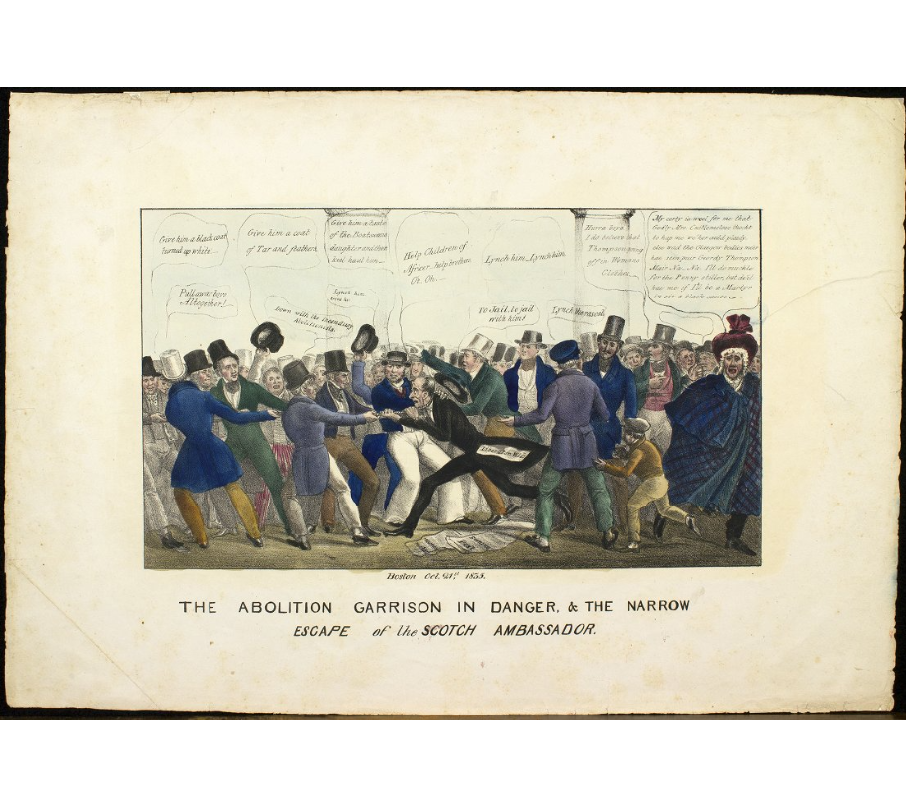John L. Thomas, The Liberator: William Lloyd Garrison, A Biography (Boston: Little, Brown and Company, 1963), pgs. 502.

John Thomas (1926-2005) crafted a monumental biography of one of the most famous American abolitionists of the Antebellum period, William Lloyd Garrison. Garrison, one of the leading abolitionists (and probably one of the most famous) pushing for immediate emancipation beginning in the 1830s, was according to Thomas, a man of contradictions. On the one had he was courageous and determined to stand up for the equality of mankind. He was deeply moral and determined to live a good Christian life. On the other hand, he could frequently be authoritarian and vindictive, driving wedges in a movement that faced opposition from both Southern slaveholders and Northern unionists. For Thomas, Garrison, though not the embodiment of the age, is representative of many of the tensions and ideas that helped shape the United States and push it towards Civil War.
One of the greatest strengths of this biography is the lack of hero worship and Thomas’s willingness to engage with the complexity of American abolitionism in the Antebellum period. Frequently, because of the abolitionists helped bring about the end of slavery, some are hesitant to critique those who fought against America’s “original sin.” Thomas is willing to point to the anger and polarization that Garrison and his followers caused. Never condoning slavery, still Thomas is emphatic that Garrison did much to harm antislavery coalitions with his radical assaults on fellow abolitionists and refusal to work with those who did not see exactly as he did. As a scholar of the abolitionists prior to 1830, Garrison’s tactics were frequently alienating to those who were likewise engaged in destroying slavery.
Another strength of the book is Thomas noting the deep religiousity of the abolitionists and surveying how religion played a crucial role in the antislavery campaigns. Rather than simply say “religion helped” before overemphasizing secular ideas, Thomas spends ample time exploring how the Second Great Awakening gave both the style and rhetoric of reform to the abolitionist movement.
While Thomas is right in many of his critiques of Garrison, Thomas frequently wrote bitterly of the “Liberator.” His judgements were harsh and at times he acted as though he knew entirely the inner thoughts and traits of Garrison. This near psychoanalytical approach has fallen heavily out of favor in the history profession. Furthermore, at times in focusing on the role of Garrison and slaveholders, Thomas was highly critical of the Garrisonians, however, he fails to really drive home how many slaveholders were pushing for expansion and overturning of antislavery at large. While not heroes, slaveholders certainly receive a much kinder handling than they do
Overall Thomas wrote a readable and well written book that provides a perspective on Garrison that readers will likely not get from modern depictions . It is flawed and overly presumptuous at times, yet the final idea, that Garrison can be used to show many of the tensions of the Antebellum era is a good one. A man driven by religious fire and a desire to usher in the dawn of an age of freedom, liberty, and godliness, William Lloyd Garrison, like many of his contemporaries, confronted friend and foe as he worked to transform his world to be free from the sins of an earlier era.
Robert Swanson



